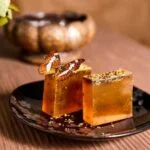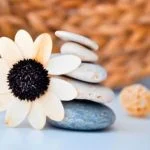Creating your own aromatherapy air freshener can be a rewarding and therapeutic experience. By crafting a personalized blend of essential oils, you can elevate the ambiance of any space while enjoying the benefits of aromatherapy.
This article will guide you through the process of making your very own aromatherapy air freshener at home, using natural ingredients to create a safe and pleasant scent. Whether you’re looking to improve your mood, promote relaxation, or simply enhance the atmosphere in your home or office, this DIY aromatherapy air freshener recipe will help you achieve just that.
Aromatherapy is a holistic practice that harnesses the power of essential oils to promote physical and psychological well-being. The principles of aromatherapy suggest that different scents can have varying effects on our mood, emotions, and overall health.
By understanding how essential oils work and which ones are best suited for specific purposes, you can tailor your aromatherapy air freshener blend to meet your needs and preferences. From calming lavender to invigorating citrus, there are a wide range of essential oils to choose from when creating your custom air freshener.
Selecting the right essential oils is key to creating an effective and pleasant-smelling aromatherapy air freshener. When choosing your oils, consider their individual properties and how they complement each other in a blend.
Whether you prefer floral, herbal, or citrus scents, mixing and matching different essential oils allows you to create a unique fragrance that suits your personal taste. With the right combination of essential oils and a few simple supplies, you can easily make your own aromatherapy air freshener that helps improve the ambiance of any space.
Understanding Aromatherapy
Aromatherapy has been used for centuries as a natural way to promote health and well-being. The principles of aromatherapy revolve around the use of essential oils extracted from plants to improve physical, mental, and emotional health. These essential oils are highly concentrated liquids that contain the essence of a plant’s fragrance and beneficial properties. When inhaled or applied to the skin, essential oils can positively impact mood and overall health.
Essential oils work through various mechanisms to elicit their effects on the body and mind. When inhaled, the aroma of essential oils can stimulate the olfactory system, which is linked to the limbic system – the part of the brain that controls emotions and memories.
This connection between scent and emotions is why certain scents can evoke specific feelings or trigger memories. For example, inhaling lavender essential oil may promote a sense of calm and relaxation, while citrus scents like lemon or orange can help uplift mood and boost energy levels.
In addition to their aromatic benefits, essential oils also possess therapeutic properties that can support overall health. Different essential oils have distinct properties that range from antibacterial and antifungal to analgesic and anti-inflammatory. For example, tea tree oil is known for its antimicrobial properties, making it useful for purifying the air and promoting respiratory health.
Peppermint oil has a cooling effect that can help alleviate headaches and nausea when inhaled or applied topically. By understanding how different essential oils work, individuals can create personalized aromatherapy blends tailored to their specific needs and preferences.
Essential Oils Selection
When it comes to creating your own aromatherapy air freshener recipe, the selection of essential oils plays a crucial role in determining the overall effectiveness of the blend. Different essential oils have unique properties that can create a tailored experience based on personal preferences and desired benefits. Here is a guide on choosing the best essential oils for creating a personalized aromatherapy air freshener blend:
- Lavender: Known for its soothing and calming properties, lavender essential oil is perfect for promoting relaxation and reducing stress. It also has a pleasant floral scent that can help create a peaceful ambiance in any space.
- Peppermint: With its invigorating and refreshing scent, peppermint essential oil is ideal for boosting energy levels and improving focus. It can also aid in relieving headaches and respiratory issues.
- Lemon: Bright and uplifting, lemon essential oil is great for promoting a cheerful atmosphere and combating odors. Its citrusy aroma can help uplift mood and create a sense of cleanliness.
When selecting essential oils for your aromatherapy air freshener blend, it’s important to consider not only their aromatic qualities but also their therapeutic benefits. Experiment with different combinations to find the perfect mix that suits your needs and preferences.
- Frankincense: Often used in meditation practices, frankincense essential oil has grounding and calming properties that can promote emotional balance and relaxation.
- Eucalyptus: Known for its respiratory benefits, eucalyptus essential oil can help clear congestion and support respiratory health. It also has a cooling effect that can provide relief during hot seasons.
- Orange: With its sweet and uplifting aroma, orange essential oil is excellent for brightening mood and energizing spaces. It can also help reduce anxiety and promote feelings of happiness.
By carefully selecting the right combination of essential oils based on your desired effects, you can create a personalized aromatherapy air freshener blend that not only enhances the ambiance of your space but also provides various health benefits for both body and mind. Enjoy the process of experimenting with different scents to find the perfect blend that resonates with you.
Supplies Needed
Creating your own aromatherapy air freshener at home can be a fun and fulfilling project. To get started, you will need a few key materials and tools to make the process smooth and efficient. One of the most important supplies you will need is essential oils.
These oils are the heart of your air freshener blend and will determine the scent and therapeutic benefits it provides. Popular essential oils for air fresheners include lavender for relaxation, tea tree for its antibacterial properties, and peppermint for a refreshing aroma.
In addition to essential oils, you will also need a base for your air freshener blend. This can be distilled water, witch hazel, or rubbing alcohol, which helps disperse the scent of the essential oils into the air.
Other supplies include a spray bottle or diffuser to contain and dispense your homemade air freshener, as well as labels to keep track of your different blends. Having measuring spoons or droppers on hand can also help ensure you create consistent and balanced fragrances each time you make a new batch of aromatherapy air freshener.
To enhance the visual appeal of your homemade aromatherapy air freshener, consider using decorative elements such as dried flowers or herbs to infuse an additional touch of nature into your blend. These decorative touches not only add beauty to your creation but can also complement the aromatic experience when using the air freshener in your living space.
By gathering all the necessary supplies before starting this project, you can enjoy a seamless crafting experience and create personalized aromatherapy air fresheners that cater to your preferences and needs.
| Materials | Tools |
|---|---|
| Essential Oils (e.g. Lavender, Tea Tree, Peppermint) | Spray Bottle or Diffuser |
| Base (Distilled Water, Witch Hazel, Rubbing Alcohol) | Measuring Spoons or Droppers |
| Dried Flowers or Herbs (optional) | Labels |
DIY Aromatherapy Air Freshener Recipe
Creating your own aromatherapy air freshener at home is a simple and rewarding DIY project that allows you to customize the scents according to your preferences. By using essential oils in your air freshener recipe, you can enjoy the therapeutic benefits of aromatherapy while also freshening up your living space. Essential oils are derived from plants and contain various compounds that can positively impact mood, reduce stress, and promote relaxation.
To make your own aromatherapy air freshener, you will need a few key supplies such as a small spray bottle, distilled water, witch hazel or vodka (as a preservative), and of course, your chosen essential oils. When selecting essential oils for your homemade air freshener blend, consider scents that appeal to you and align with the mood or atmosphere you wish to create.
For example, lavender is known for its calming properties, citrus oils like lemon or sweet orange can uplift the spirit, while peppermint provides a refreshing and invigorating aroma.
Once you have gathered all your supplies and selected the essential oils for your blend, follow these step-by-step instructions to create your personalized aromatherapy air freshener:
- Fill the spray bottle halfway with distilled water.
- Add 1-2 tablespoons of witch hazel or vodka to help disperse the essential oils and preserve the mixture.
- Select 15-20 drops of essential oils of your choice (you can mix different oils to create unique blends) and add them to the spray bottle.
- Shake well before each use to ensure the essential oils are evenly distributed.
- Spray around your home or workspace whenever you need to refresh the air or set a specific ambiance.
By making your own aromatherapy air freshener using natural ingredients like essential oils, you not only avoid harsh chemicals found in many commercial products but also reap the therapeutic benefits of aromatherapy. Experiment with different scent combinations and discover what works best for enhancing your space and wellbeing with this simple yet effective DIY project.
| Essential Oil | Main Benefits |
|---|---|
| Lavender | Calming properties that reduce stress and promote relaxation. |
| Lemon | Uplifting scent that enhances mood and energy levels. |
| Peppermint | Refreshes the air while providing an invigorating aroma. |
Tips for Effective Use
Proper Placement
When using your homemade aromatherapy air freshener, it’s essential to consider the placement in the space you want to freshen up. For maximum effectiveness, place the air freshener in areas where there is good airflow, such as near a window or a fan. This will help disperse the scent throughout the room more effectively. You can also consider placing it near heat sources like radiators or vents to help distribute the aroma further.
Regular Refreshing
To ensure that your aromatherapy air freshener continues to work its magic, make sure to refresh it regularly. Essential oils tend to evaporate over time, so it’s a good idea to add a few extra drops of your chosen oils every few days or whenever the scent starts to fade.
This will keep your space smelling fresh and inviting at all times. Additionally, you can try experimenting with different essential oil combinations to keep things interesting and prevent olfactory fatigue.
Customization for Different Spaces
Different spaces may require different scents or intensities of aroma. Consider customizing your aromatherapy air freshener recipe based on the specific needs of each room in your home or office. For example, energizing scents like citrus and peppermint are great for workspaces, while relaxing scents like lavender and chamomile are perfect for bedrooms or relaxation areas. By tailoring your air freshener blend to suit each space, you can create a personalized and enjoyable olfactory experience for yourself and others.
Benefits of Using Natural Air Fresheners
Natural air fresheners offer a plethora of benefits compared to commercial products that are often filled with synthetic fragrances and harsh chemicals. By opting for natural ingredients in your aromatherapy air freshener recipe, you not only create a safer environment for yourself and your loved ones, but you also contribute to a greener and more sustainable lifestyle. Here are some advantages of using natural air fresheners:
- Health Benefits: Natural air fresheners made with essential oils have the potential to improve your physical and mental well-being. The therapeutic properties of essential oils can help reduce stress, boost mood, and even alleviate certain health conditions like headaches or congestion.
- Environmentally Friendly: Commercial air fresheners often contain volatile organic compounds (VOCs) that can be harmful to the environment. By using natural ingredients like essential oils, you not only avoid releasing harmful chemicals into the air, but you also support eco-friendly practices and reduce your carbon footprint.
- Customizable Scents: Creating your own aromatherapy air freshener recipe allows you to customize the scent according to your preferences and needs. Whether you prefer floral notes to relax or citrusy scents to energize, the possibilities are endless when it comes to blending different essential oils for a personalized aroma.
In addition to these benefits, natural air fresheners are also known for their long-lasting effects and ability to purify the air without masking odors with artificial fragrances. With just a few simple ingredients, you can create an effective and all-natural alternative to commercial air fresheners that not only smells good but also promotes a healthier living environment. Embrace the power of nature’s fragrance with your own DIY aromatherapy air freshener recipe.
Aromatherapy Air Freshener Safety
Using essential oils in homemade aromatherapy air fresheners can provide numerous benefits, but it is crucial to prioritize safety to ensure a pleasant and risk-free experience. When creating your own aromatherapy air freshener recipe, always remember to carefully choose high-quality essential oils and follow proper dilution guidelines to prevent skin irritation or allergic reactions. Additionally, it is essential to store your DIY air freshener in a safe place away from pets and children to avoid any accidental ingestion.
Furthermore, when using aromatherapy air fresheners in enclosed spaces, such as offices or bedrooms, ensure proper ventilation to prevent overpowering scents that may lead to headaches or respiratory discomfort. Moderation is key when using essential oils for their therapeutic properties through air fresheners – a subtle diffusion of fragrance can be more effective than an overwhelming concentration. Always test your personalized blend on a small area before widespread use to ensure compatibility with your preferences and sensitivities.
In conclusion, by following these safety precautions and best practices outlined in this guide, you can enjoy the benefits of aromatherapy through homemade air fresheners without compromising on health and well-being. Creating your own aromatherapy air freshener not only allows you to customize scents according to your preferences but also empowers you to embrace natural ingredients for a healthier living environment.
Remember that the essence of aromatherapy lies in its ability to uplift mood, promote relaxation, and improve overall ambiance – so why not indulge in the soothing fragrances of your personalized DIY aromatherapy air freshener today?
Frequently Asked Questions
How Do You Make Aromatherapy Air Freshener?
Making an aromatherapy air freshener is a simple process that involves combining distilled water with a few drops of essential oils in a spray bottle. Shake well before each use and spritz around your home for a natural and pleasant aroma.
What Is the Best Homemade Air Freshener?
When it comes to the best homemade air freshener, many people swear by using baking soda combined with essential oils in a jar with tiny holes punched in the lid. This homemade option absorbs odors while releasing a lovely fragrance into the room.
How Do I Make My House Smell Good With Essential Oils?
To make your house smell good with essential oils, consider using a diffuser to disperse the scents throughout your space. You can also add a few drops of essential oils to cotton balls and place them strategically around your home for lasting freshness.

Are you looking for a natural way to improve your health and wellbeing?
If so, aromatherapy may be the answer for you.





